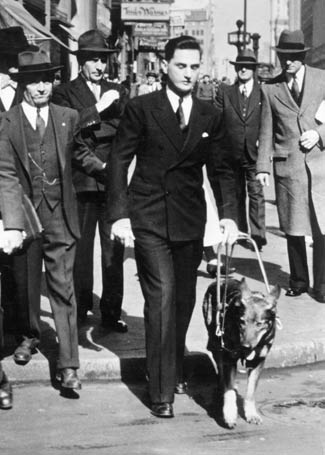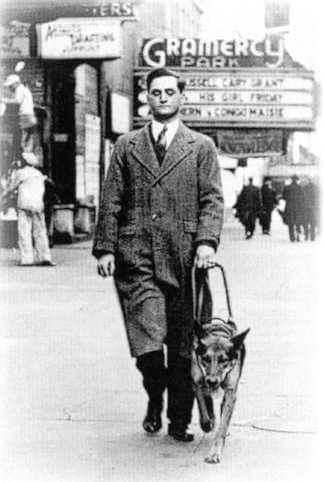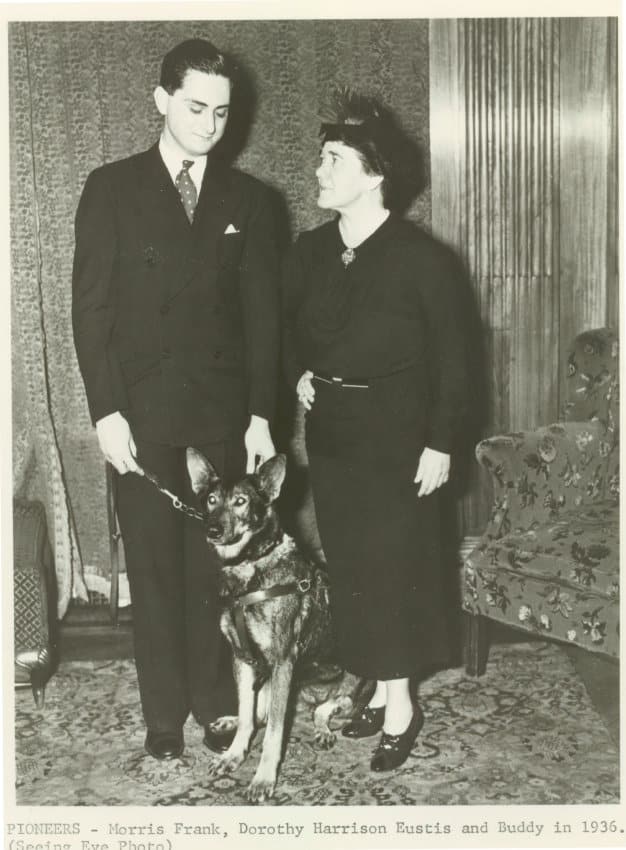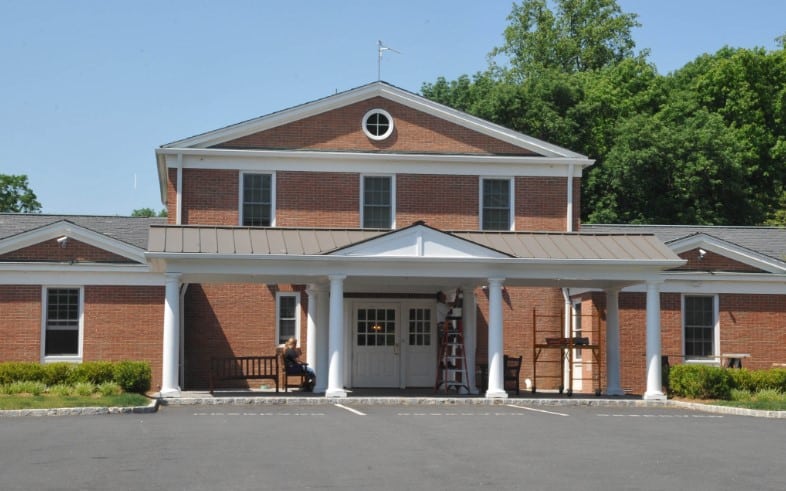Morris Frank And Buddy: Inspiring Story Of A Blind Man And His Remarkable Dog
Frank Morris and his faithful companion Buddy did something amazing, transforming the lives of blind people by granting them newfound independence. Buddy, in Frank’s words, bestowed upon him the invaluable gift of freedom.
Before the advent of guide dogs, those with visual impairments faced widespread marginalization. They lacked access to public spaces and opportunities for employment, relying entirely on others for their daily needs.
Frank and Buddy were among those who gave them the belief to live a normal life.
Challenges faced by Frank Morris after losing his eyesight

In Morristown, New Jersey, near the Morristown Green, there’s a lifelike bronze statue of a man and his dog. This man is Morris Frank, the co-founder and first Vice President of The Seeing Eye. By his side is Buddy, a German Shepherd, recognizable by his assistance animal harness.
Buddy was the first guide dog for the blind in the United States. This statue, called “The Way to Independence,” honors their pioneering work in helping blind individuals gain greater independence.

Frank Morris was born in Nashville, Tennessee, in 1908. His life took a challenging turn at the age of six when he lost his right eye in a horseback riding accident.
At 16, he lost his left eye during a boxing match, which left him completely blind. This situation frustrated him deeply as he had to rely on others for assistance.
In his early years, Frank spent his summers at Camp Winnebago in Fayette, Maine. He graduated from Montgomery Bell Academy and pursued his studies at Vanderbilt University, all while working as an insurance salesman.
He tried hiring young men as guides, but they often turned out to be unreliable.
A ray of hope found its way

In November 1927, Frank’s father read him an article in The Saturday Evening Post that would profoundly impact their lives and the lives of countless blind individuals.
The article, penned by American dog trainer Dorothy Harrison Eustis, detailed a German school training blind World War I veterans to use guide dogs.
Moved by the article, Frank wrote to Eustis, seeking information on how he could obtain a guide dog.
He inquired about the German school and any available trainers in the U.S., expressing his interest in advancing this work in America.
On February 9, 1928, Eustis called Frank and invited him to her dog-training school in Switzerland, Fortunate Fields, to be matched with a guide dog. Frank’s determination shone through as he responded, “Mrs. Eustis, to get my independence back, I’d go to hell.”
The meaningful time with Buddy

At Fortunate Fields, Frank was partnered with a female German Shepherd named Kiss, whom he renamed Buddy. Elliot “Jack” Humphrey, a self-taught animal trainer and breeder working for Eustis, taught Frank how to work with Buddy.
Despite the challenging training, he was able to go around the Swiss village of Vevey safely with Buddy after a few weeks.
On June 11, 1928, Frank and Buddy returned to New York City, sharing with reporters how he could now travel independently thanks to his guide dog.

Morris said, “She [Buddy] moved forward into the ear-splitting clangor, stopped, backed up, and started again. I lost all sense of direction and surrendered myself entirely to the dog. I shall never forget the next three minutes: 10-ton trucks rocketing past, cabs blowing their horns in our ears, drivers shouting at us.
When we finally got to the other side and I realized what a really magnificent job she had done, I leaned over and gave Buddy a great big hug and told her what a good, good girl she was.”
He sent a one-word telegram to Eustis: “SUCCESS!” Frank continued to work with Buddy until her passing on May 23, 1934.
Details on The Seeing Eye

The Seeing Eye was established in Nashville, Tennessee on January 29, 1929. In 1931, it was moved to Whippany, New Jersey, due to the more favorable climate for dog training in the northeast.
On June 5, 1965, they laid the cornerstone for their current headquarters in Morris Township, New Jersey. Renovations at the Washington Valley headquarters were completed in 2013. Their expansive 60-acre campus now includes administrative offices, student residences, a veterinary clinic, and kennels.
In 2001, The Seeing Eye established a breeding station on 330 acres in Chester, New Jersey, where adult breeding dogs and puppies are cared for until they are 8 weeks old. Additionally, they operate another training center located in downtown Morristown.

Between 1928 and 1956, Frank served as Vice President of The Seeing Eye. He traveled extensively across the United States and Canada to advocate for the organization and equal access laws for guide dog users.
He met with U.S. President Herbert Hoover in 1930 and President Harry Truman in 1949. From 1954 to 1956, Frank visited 300 ophthalmologists and Seeing Eye graduates in all 48 states and Canada.
Frank tirelessly advocated for the rights of guide dog users. Initially facing restrictions on Buddy riding in passenger compartments, by 1935, all U.S. railroads permitted guide dogs.
By 1939, The Seeing Eye reported a few hotels banning guide dogs, a trend shrinking yearly. By 1956, every state guaranteed blind individuals with guide dogs access to public spaces.
At age 48 in 1956, Frank retired from The Seeing Eye to establish his own insurance agency in Morristown. He passed away at 72 on November 22, 1980, at his Brookside home in Mendham Township, New Jersey.

